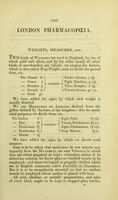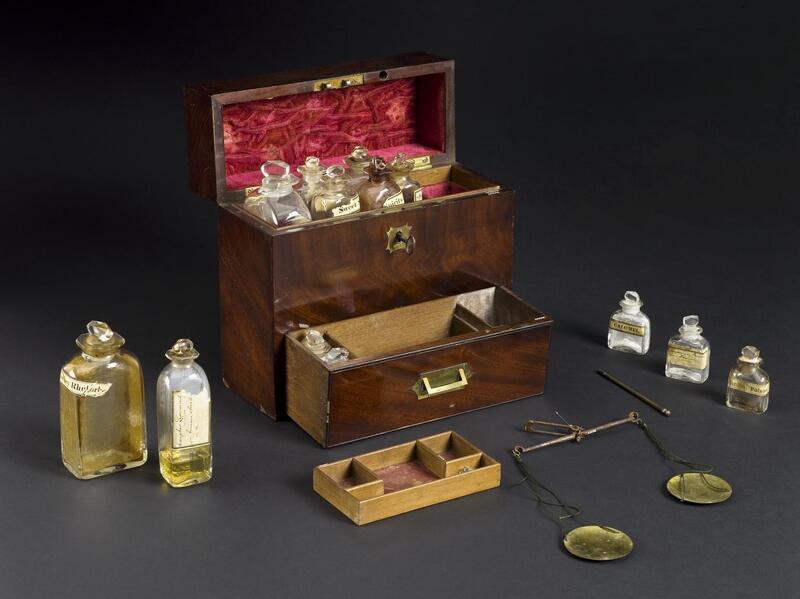Pharmacopoeia and Medicine Chests
Devolpment of the Pharmecopias
The ongoing attempts at standardization of the medical field during the 19th century was through the use of pharmecopias, or a book with a compilation of the accepted practices in the medical and pharmaceutical professions and standard medicinal substances. It ensured that there was the purity of standardized substances and could control what items and recipes were used to regulate trade.
While pharmacopeias had been published for centuries in London, Dublin and Edinburgh, in 1864, the first British Pharmacopeia was published to have standardization and reform across Britain. It could also be used in other places across the British Empire to ensure the colonies practiced a standardized form of medicine.
This excerpt from a pharmacopeia from 1851 shows how it could be used as a reference and educational tool by showing the breakdown of different weight and liquid measurements which are then referenced throughout the book. It also includes a section on "Materia Medica", on how to store, use, and identify different vegetable, animal, and chemical substances used in curing diseases or medicines, as well as a part on "Preparation and Compounds" of things like pills, enemas, metals, powders, and syrups.
Medicine Chests
In addition to the pharmacopeia came new ways to store, pack, and distribute medicine both domestically for personal and family use but also for the context of the British Empire in the use of medicine chests. Medicine now came in forms, as opposed to the style powders, with compressed tablets and branded products, that made it easier to include more items in a smaller space. It was also easier to market and sell in advertisements to new middle class families.
Take a look on how a these elements might interact: A medience chest would contain a variety of different medicines, often in pill or powder form, as well as different tools. The Rosewood Medicine Chest includes a bottle of Calomel. Which is a purgative, which would help release waste from a body. This bottle, is from somewhere else, but could have been used in a place like an apothecary or a medicine chest. The page from the pharmacopeia, would explain how a medical practitioner might be educated on the topic. It does not give a specific disease it could help cure but does explain how it could be given to treat the diseases of children.
Sources Used:
Anderson, Stuart. “Pharmacy and Empire: The ‘British Pharmacopoeia’ as an Instrument of Imperialism 1864 to 1932.” Pharmacy in History 52, no. 3/4 (2010): 112–21.
Bhattacharya, Nandini “The Colonial Medicine Chest.” In Disparate Remedies: Making Medicines in Modern India, 7:21–46. (McGill-Queen’s University Press, 2023.)



